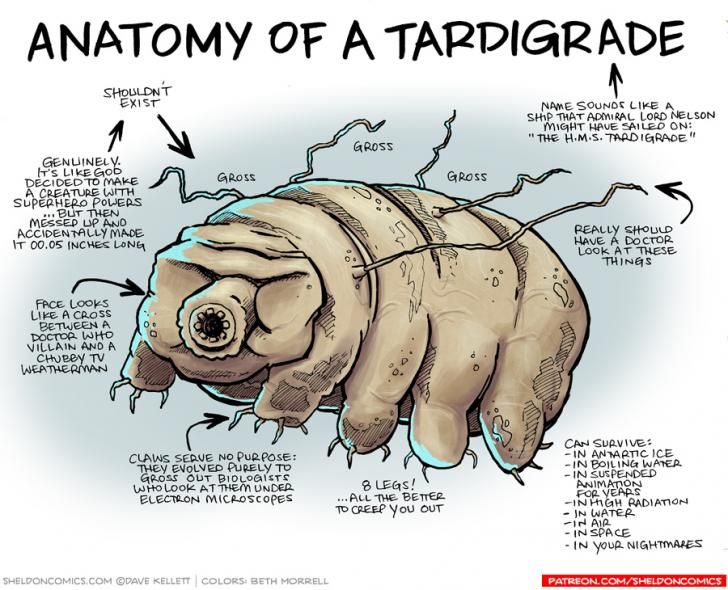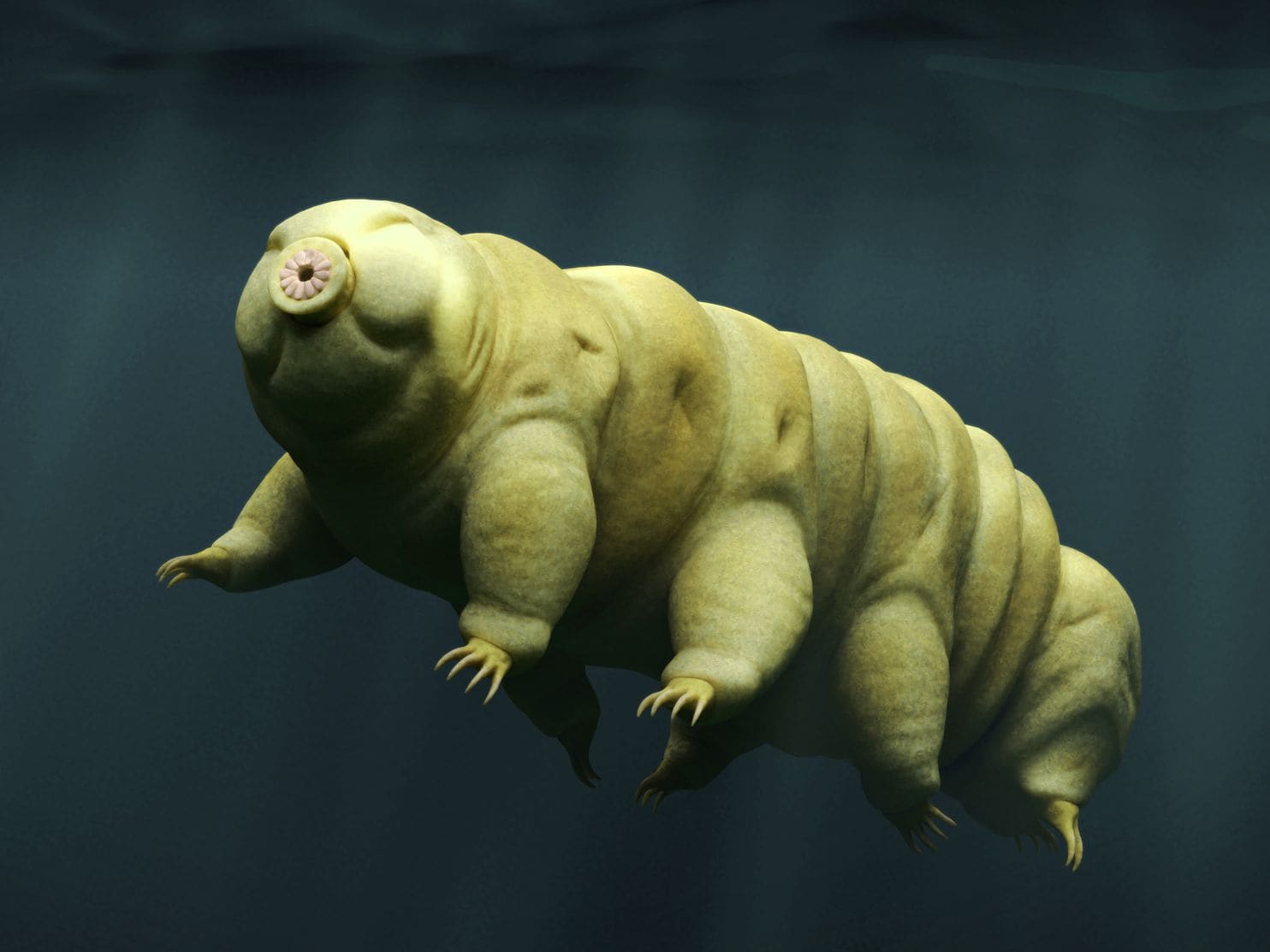No matter how much science advances and thinks it has conquered all, new and more perplexing discoveries are made with each passing day. The diversity of living organisms and their unique features never cease to amaze us. Stumbled upon by a team of Japanese scientists in 1983, Tardigrades were found in a pile of moss in Antarctica. They are a millimeter long and resemble teddy bears and caterpillars. Weird enough, huh?
The tardigrades, along with the moss, were collected and preserved by the scientists at a temperature of -4 degrees Fahrenheit. Unfortunately, there they lay, pretty much forgotten.
In 2014, they were thawed and placed on an agar plate, where they started moving around as though nothing had happened and reproduced.
Scientists studied these ‘water bears’, quite mesmerized by their ability to survive in almost any condition. These little guys can resist heat because they produce heat-shock proteins and can also form bubbly cysts around themselves in harsh environments. Tardigrades have proven themselves to be one of the toughest animals on Earth due to their extreme resilience to every climate and latitude. They are found in the oceans and in the soil of every continent. There are many species of tardigrades found across different regions.

Tardigrades, also known as moss piglets, are microscopic creatures measuring between 0.002 and 0.05 inches (0.05 to 1.2 millimeters) long. They have endearingly tubby bodies and eight legs tipped with tiny “hands.”
How did Tardigrades end up on the Moon?
That’s right. These little hydrobears have reached the moon! In April, the Israeli lunar lander, Beresheet crashed on the moon due to a computer error. Beresheet, a robotic lander, had carried human DNA samples, along with the tardigrades and 30 million small digitized pages of information about human society and culture. This was carried out in case if ever the human race goes extinct, so aliens and extraterrestrial life could get to know about life on Earth.
Tardigrades were chosen along because they can survive vacuum as well. And they survived the crash as well, so every time you look at the moon, you are looking at a population of tardigrades as well.
Tardigrades can survive conditions that would be deadly to any other form of life, weathering temperature extremes of minus-328 degrees Fahrenheit (minus-200 degrees Celsius) to more than 300 F (149 C). They also handily survive exposure to the radiation and vacuum of space. Research has also shown that they can survive pressures up to 87,022.6 pounds per square inch — six times what you’d find in the deepest part of the ocean. (Around 43,00 PSI, “most bacteria and multicellular organisms die,” Nature reported.) They’re that tough.
Another tardigrade superpower is their ability to dehydrate their bodies into a state known as a “tun.” They retract their heads and legs, expel the water from their bodies and shrivel up into a tiny ball — and scientists have found that tardigrades can revive from this dehydrated state after 10 years or more. As tuns, the tardigrades produce glycerol (antifreeze) and secrete trehalose, a simple sugar that mummifies them in a glass suit of armor. This process is called vitrification, and scientists have studied it for use in protecting other delicate cellular tissues like sperm and eggs. As a tun, the tardigrade reduces its metabolism by 99.99 percent as it waits for a more suitable environment. If a cataclysm wipes out most of life on the planet — including humans — it’s likely that tardigrades will survive.

Importance of Tardigrades on the Moon
The moon formed more than 4 billion years ago. And for the entirety of its existence, it has been a completely sterile place. Humans first brought life to the moon — in the form of microbes hiding in feces and other human waste — 50 years ago, with the Apollo missions. And now, it has tardigrades too.
It will be fascinating if, one day, astronauts decide to go back and collect them. Because if they can survive on the surface of the moon — an incredibly harsh, irradiated environment — it helps us understand the resiliency of life.

It could also help us investigate the hypothesis that life didn’t start on Earth at all. Rather, perhaps it was seeded by microbes from another world. If life can survive on the moon, even in a dormant state, it could mean that life can survive long stretches of time in the deep reaches of space, traveling between worlds, propagating life along the way.
“Can simple life spread through the cosmos like radio waves, or does it need to wait billions of years until there are technological species with spaceships to spread it?” planetary scientist Phil Metzger recently asked on Twitter.
That’s a huge question in astrobiology. Maybe these tardigrades, one day, can help us discover the answer.
Also Read: ASTROBIOBOUNDS: SEARCH FOR LIFE IN SOLAR SYSTEM

Aniqa Mazhar is a graduate of QAU in Biochemistry. She has taught sciences to O levels and is currently planning for her MS in Food Technology. Aniqa’s hobbies are reading, watching movies, writing, calligraphy, long walks, and nature photography.

